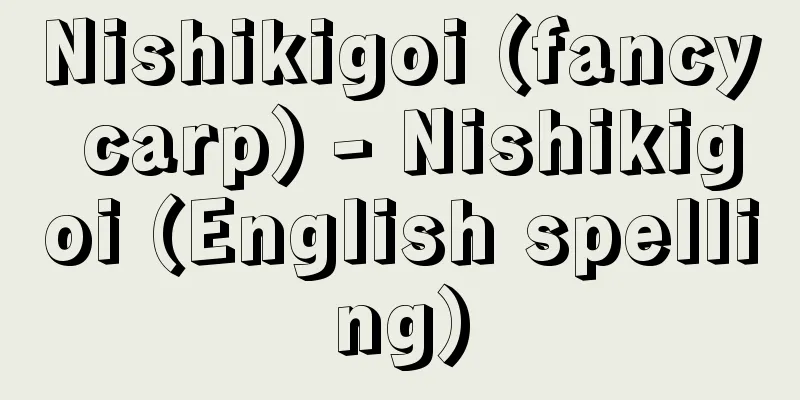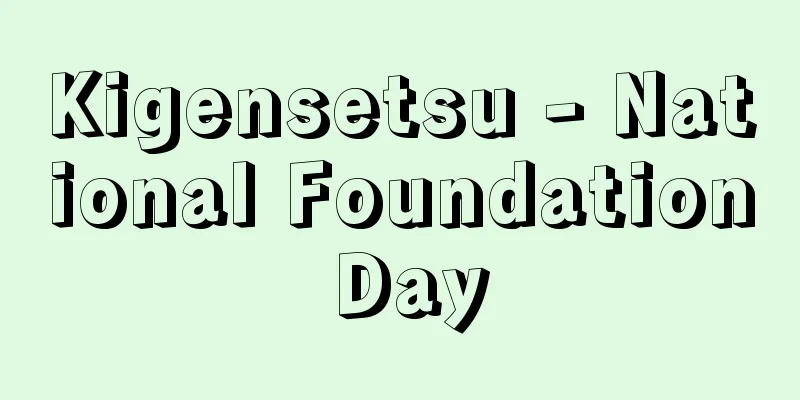National Treasury Disbursements - Kokkoshishutsukin

|
The national government covers all or part of the expenses required for specific administrative work carried out by local governments. They are classified as national treasury contributions, national treasury subsidies, and national treasury commissions (often collectively referred to as subsidies). They differ from local allocation taxes, which are also provided by the national government, in that the use of the funds is specified. National treasury contributions are an obligation for the national government to cover all or part of the expenses for administrative work carried out by local governments. The types of expenses covered by the grant, the calculation standards, and the share of the burden between the national government and local governments are set by law or cabinet order. National treasury subsidies are provided by the national government to local governments when the national government encourages the implementation of specific administrative work or when it recognizes a special financial need for the local government. National treasury commissions are administrative work that the national government should actually carry out itself, entrusted to local governments for convenience and efficiency, and the national government covers all of the expenses. Looking at the budget amounts and composition ratios for each of these based on the fiscal 1998 (Heisei 10) local government financial plan, the national treasury contributions were 8,725.7 billion yen (67.2%), national treasury subsidies were 4,117.4 billion yen (31.7%), and national treasury entrustments were 139.2 billion yen (1.1%). Also, looking at the ratio of national treasury disbursements by use (fiscal 1999 settlement amount), ordinary construction work expenses (36.8%) were the largest, followed by compulsory education expenses (18.1%), public assistance expenses (8.4%), child protection expenses (3.7%), and elderly protection expenses (2.8%). [Takeshi Okawa] HistoryThe origins of the national treasury disbursement system can be traced back to the Meiji period. After the First Sino-Japanese War of 1894-95 (Meiji 27-28), there was a need to expand projects such as industrial promotion, education, civil engineering, health and hygiene, and police, and the number of delegated tasks from the national government to local governments increased sharply, and subsidies were provided to facilitate their implementation. However, because the amount of subsidies was small, the increase in delegated tasks placed a heavy strain on local finances. In this situation, the idea of dividing up the costs of expenses was born, which questioned how the national and local governments should share the burden of expenses. This bore fruit in 1918 (Taisho 7) with the creation of the National Treasury Disbursement System for the Salaries of Municipal Compulsory Education Personnel. The idea of dividing up the costs of expenses was first applied to compulsory education, and it was not until the Local Finance Act of 1948 (Showa 23) that this idea was generally established. This Local Finance Law stipulates the following principles for dividing national and local expenditures: (1) Local governments are to bear the full cost of affairs that primarily affect the interests of local governments, (2) both national and local governments are to bear the costs of affairs that affect the interests of both, and (3) National governments are to bear the full cost of affairs that primarily affect the interests of the nation. (For projects in (2), the national government pays national treasury contributions to the local governments to share the costs.) The basis for contributions is the benefit theory. However, the Shoup Tax Mission, which visited Japan in 1949, comprehensively criticized this national subsidy system. The main points were as follows: First, full subsidies (1) confuse the responsibilities of the national and local governments, (2) place local governments under unnecessarily strong control by the central government, and (3) create unnecessary friction between the national and local governments when deciding on subsidies and contributions. In addition to the reasons mentioned above, partial subsidies have the following problems: (1) the subsidies to wealthy organizations and poor organizations are all at exactly the same rate, making it impossible to average out the burden on organizations with differing financial strength; (2) there is no objective way to determine what percentage of a given task is in the national interest and what percentage is in the local interest, making the determination of the subsidy rate arbitrary; and (3) it is not clear to residents where administrative responsibility lies. After making this criticism, the court recommended that all subsidies other than incentive subsidies and public works subsidy contributions be abolished and that full responsibility be assigned to the administrative agency best suited to carry out the work. In response to this, the provisions of the Local Finance Law relating to the division of national and local expenditures were suspended for the fiscal years 1950 and 1951 only. However, due to resistance from central government ministries and agencies, thorough reform of the reorganization of subsidies and contributions in line with this recommendation did not progress, and some of the provisions that had been abolished began to show signs of being reinstated. In light of this situation, the Local Finance Law was amended in 1952 to establish the principle that the local governments themselves should bear the full cost of the affairs of local governments or their agencies, but to make exceptions to this rule for (1) affairs that are required by law and that are related to the mutual interests of the national and local governments, (2) construction projects that are implemented according to a comprehensive plan established to suit the national economy, and (3) disaster relief and disaster recovery projects. It also stated that local governments are not obligated to bear the cost of affairs that are solely related to the interests of the national government. The exception provisions left the idea of dividing up the expenses, and confirmed the current state of national treasury disbursements. Essentially, this provision remains in place to this day. [Takeshi Okawa] Reduction of the subsidy rateThe proportion of national treasury disbursements in local government revenues was in the 20% range in the 1960s and 1970s, but began to decline in the 1980s, reaching 18.3% in FY1985, 13.3% in FY1990, and remaining in the 14% range thereafter (slightly increasing to 15% and 16% in FY1998 and FY1999). This was largely due to the reduction in national treasury disbursements as part of the national government's efforts to rebuild finances and curb expenditures, which began in FY1980. In fiscal 1985, as a temporary measure, the subsidy rate of more than half was reduced. Many of the high-rate subsidies were for welfare-related expenses (for example, public assistance expenses and child protection measures expenses were reduced from 8/10 to 7/10). In addition, in order to secure the volume of projects, the subsidy rate for investment expenses was also reduced across the board (for example, the rate for reconstruction of national highways was reduced from 2/3 to 6/10). In the following fiscal year 1986, the temporary reduction in the subsidy rate was continued for another three years, and was partially strengthened (for example, the rate for child protection measures, etc. was reduced from 7/10 to 5/10). In addition, the review was expanded to include those with a rate of less than half. In fiscal 1987, there was a request to expand the volume of public works projects to expand domestic demand, and the subsidy rate for investment expenses was reduced for the third time (for example, the rate for reconstruction of national highways was reduced from 5.5/10 to 5.25/10). In response to the increased burden on local governments due to these measures, financial measures such as an increase in the local allocation tax and the issuance of more local construction bonds were taken, but local governments strongly resisted these measures. As a result, in fiscal 1989, the national government transferred permanent financial resources to local governments for current expenses (adding 25% of the national tobacco tax to the local allocation tax), thereby making the subsidy burden rates permanent (for example, three-quarters for welfare assistance expenses and one-half for social welfare-related expenses). However, due to the need to secure the volume of projects, temporary measures continued for investment expenses, and it was only in fiscal 1993 that the subsidy burden rates were systematically reviewed and finally settled (two-thirds for national projects and one-half for subsidized projects were set as the basic rate, with special subsidy burden rates set for large-scale projects, etc.). The division of national and local government expenditures needs to be reviewed in accordance with changes in the socio-economic situation, but this temporary reduction has been implemented solely from the perspective of rebuilding the nation's finances and curbing expenditures, and cannot be said to be based on a fundamental review of the interests and degrees of responsibilities, and roles, of the national and local governments. [Takeshi Okawa] IssuesNational treasury disbursements, or subsidies, fulfill the functions of the national government to manage and control the administrative and financial management of local governments, ensure a certain level of administration, and ensure that the national government's policy intentions are fully understood by local governments. However, such functions of subsidies often bring about various adverse effects on the administrative and financial management of local governments, as listed below. First, the conditions attached to the grant are uniform, ignoring the unique characteristics of each region and making it difficult to utilize local ideas. The application and grant procedures and project inspections are complicated and time-consuming. Local governments tend to place more importance on whether or not the subsidy will be granted than on the needs of the residents, which tends to create an attitude of waiting for the subsidy and avoiding responsibility. Since subsidies are granted by each ministry and agency, vertical ties between each department of the local government and each ministry and agency are strengthened, hindering the integrated administrative and financial management of the head of the local government. In addition, granting subsidies by each ministry and agency hinders their comprehensive and efficient use. Although the amount of subsidies is required to be calculated based on the amount necessary and sufficient for local governments to carry out the subsidized projects, in reality, the national government's estimate of this amount is low, and local governments are often forced to bear more than they should. In addition, it is often pointed out that subsidies are used to cultivate the electoral bases of assembly members and heads of local governments. As such, subsidies have many problems, and in the past, there have been many attempts to organize and streamline them, but they have not produced any notable results. [Takeshi Okawa] Moves towards reformThe Decentralization Promotion Committee's second recommendation, issued in July 1997, presented reform proposals for streamlining and rationalizing national treasury subsidies and contributions, reforming the management and involvement of existing national treasury subsidies and contributions, and ensuring the enhancement of local tax revenue sources, with a view to enhancing the autonomy and independence of local governments. First, with regard to the streamlining and rationalization of national treasury subsidies and contributions, the recommendation outlined the basic ideas of abolishing administrative tasks and projects that have lost their raison d'être and the national treasury subsidies and contributions for these, assimilation, entrenchment, and standardization of those that have become assimilated, established, and standardized, and turning personnel cost subsidies and other such subsidies into general revenue sources, the sunset method, strict implementation of the scrap-and-build principle, and clarification of the distinction between national treasury subsidies and national treasury contributions, such as incentive subsidies. The recommendation then recommended the abolition of national treasury subsidies in principle, the formulation of a plan to reduce national treasury subsidies, the review and prioritization of national treasury contributions, and the securing of the necessary general local revenue sources in the event that the said tasks and projects need to be carried out even after the abolition or reduction of national treasury subsidies and contributions. As for the reform of the operation and involvement of the existing national treasury subsidies and contributions, the report recommended the following measures to prevent excessive national involvement from impairing the autonomous and independent administrative management of local governments: (1) integration and structuring of a menu of subsidies, (2) conversion to grants, (3) more flexible operation (combination), (4) optimization and relaxation of subsidy conditions, (5) effective use and conversion of subsidized assets, (6) optimization of subsidy-related administrative execution (setting of standard processing periods, etc.), simplification of advance procedures, and (7) speeding up and flexibility of grant decisions. In addition, the report listed a total of 100 individual national treasury subsidies and contributions as examples of cases in which streamlining and reform of operation and involvement are required. However, as of 2001, streamlining of subsidies and contributions is limited to a limited extent, and progress in securing sufficient local tax revenue sources has not progressed amid the national and local financial crisis. The progress of decentralization will depend on how financial reforms, including these recommendations, are taken up and promoted in the future. [Takeshi Okawa] "The Political Economy of Subsidies" edited by Kenichi Miyamoto (1990, Asahi Shimbun)" ▽ "Research on Local Government Finance" by Takataka Kono (1999, Tax Accounting Association)" ▽ "Subsidies and the Ruling Party" by Michisada Hirose (Asahi Bunko) [References] | | | |Source: Shogakukan Encyclopedia Nipponica About Encyclopedia Nipponica Information | Legend |
|
国が、地方公共団体の行う特定の行政に対して、それに要する経費の全部または一部を負担するもの。国庫負担金、国庫補助金および国庫委託金に分類される(補助金と総称されることが多い)。同じように国から交付される地方交付税とは、使途が特定されている点で異なる。国庫負担金は、地方公共団体が実施する行政に対して、国が義務として、その経費の全部または一部を負担するものである。その交付の対象となる経費の種目、算定基準および国と地方公共団体との負担割合は、法律または政令で定めるものとされている。国庫補助金は、国が地方公共団体に対し、特定の行政の実施を奨励するとき、または地方公共団体の財政上特別の必要があると認めるとき交付するものである。また、国庫委託金は、本来国が自ら実施すべき行政を、利便性、効率性を考えて、地方公共団体に委託し、その経費の全部を国が負担するものである。 1998年度(平成10)地方財政計画ベースでそれぞれの予算額および構成比をみると、国庫負担金8兆7257億円(67.2%)、国庫補助金4兆1174億円(31.7%)、国庫委託金1392億円(1.1%)となっている。また、使途別に国庫支出金の比率をみると(99年度決算額)、普通建設事業費(36.8%)がもっとも大きく、ついで義務教育費(18.1%)、生活保護費(8.4%)、児童保護費(3.7%)、老人保護費(2.8%)となっている。 [大川 武] 沿革国庫支出金制度の萌芽(ほうが)は明治時代にまでさかのぼることができる。1894~95年(明治27~28)の日清戦争後、勧業、教育、土木、保健衛生、警察などの事業の拡充が必要となり、国から地方への委任事務が急増し、その実施を図るために補助金が交付された。しかし、補助金の額が少なかったため、委任事務の増大は地方財政を強く圧迫した。このような状況のなかから、国と地方の経費の負担のあり方を問う経費負担区分論が生まれた。これが実を結んだのが、1918年(大正7)の市町村義務教育職員給与費国庫負担金制度の創設である。義務教育について、まず経費の負担区分の考え方が適用されたわけであるが、この考え方が一般的に確立されるのは、48年(昭和23)の地方財政法においてである。 この地方財政法は、国費・地方費の負担区分のあり方として、(1)主として地方の利害に関係ある事務は全額地方が負担する、(2)国と地方双方の利害に関係ある事務は両方で経費を負担する、(3)主として国の利害に関係ある事務は全額国が負担する、という原則を示した((2)の事業に対しては、国が地方に国庫負担金を与える形で経費の分担がなされる)。負担金の根拠を利益説に求めるものである。 ところが、1949年に来日したシャウプ税制使節団は、この国費補助負担金制度を全面的に批判した。その要点は、次のようなものであった。まず全額補助負担金は、(1)国と地方の責任を混乱させ、(2)地方公共団体を不必要に中央政府の強い統制下におき、(3)補助負担金の決定に際して、国と地方との間につまらぬ摩擦を生ぜしめる。 また一部補助負担金は、前記の理由に加えて、(1)富裕団体と貧困団体への補助負担金がまったく同一の比率であって、財政力を異にする各団体の負担を平均化する方法がない、(2)所与の事務の何%が国の利害に関するもので、何%が地方の利害に関するものであるかを決定する客観的な方法がなく、補助負担率の決定が独断的になる、(3)住民の側からみて行政責任の所在が明白でない。 このように批判したうえで、奨励的補助金と公共事業費補助負担金以外の補助負担金を全廃し、その事務を遂行するのにもっとも適した行政機関に全責任を割り当てるように勧告した。 これを受けて、地方財政法の国費・地方費の負担区分にかかわる規定は、1950年度、51年度に限って適用を停止されることになった。しかし、この勧告に沿った補助負担金の整理については、中央省庁の抵抗もあって徹底した改革が進まず、いったん廃止されたものについても復活の兆しがみえはじめた。このような状況を踏まえて、52年の地方財政法改正で、地方公共団体またはその機関が行う事務に要する経費は、全額当該地方公共団体が負担するという原則を立てるとともに、例外として、(1)法令によって実施を義務づけられた事務で、国と地方公共団体相互の利害に関係のある事務、(2)国民経済に適合するように総合的に樹立された計画に従って実施される建設事業、(3)災害救助事業や災害復旧事業については、「この限りではない」とした。また、もっぱら国の利害に関係ある事務については、地方公共団体は経費を負担する義務を負わないとした。例外規定で経費負担区分の考え方を残し、国庫支出金の現状を追認するものであった。基本的には、この規定が現在まで引き継がれている。 [大川 武] 補助負担率の引下げ地方歳入に占める国庫支出金の比重は、1960年代、70年代は20%台を占めていたが、80年代に入るころから減少しはじめ、85年度は18.3%、90年度は13.3%、以後14%台で推移した(98、99年度は15%、16%と若干上昇)。これは、80年度に始まる国の財政再建、歳出抑制の取組みのなかで国庫支出金の削減が図られたことによる影響が大きい。 1985年度には、暫定措置として、2分の1を超える高率補助負担率の引下げが実施された。高率補助負担金には福祉関係費が多かった(たとえば、生活保護費、児童保護措置費は10分の8から10分の7へ)。また事業量確保のために、投資的経費についても補助負担率の一律引下げが行われた(たとえば、一般国道の改築は3分の2から10分の6へ)。翌86年度には、さらに3年間、補助負担率の暫定引下げを継続するとともに、一部強化された(たとえば、児童保護措置費等は10分の7から10分の5へ)。また、2分の1以下のものについても見直しが拡大された。87年度には、内需拡大のため公共事業の事業量拡大が要請され、投資的経費の補助負担率の第三次引下げが行われた(たとえば、一般国道の改築は10分の5.5から10分の5.25へ)。これらの措置に伴う地方負担の増加に対しては、地方交付税の増額や建設地方債の増発などの財源措置がとられたが、地方公共団体側からは反発が強かった。そのため、89年度に至って、経常経費について、国から地方へ恒久財源の移譲を行う(国のたばこ税の25%を地方交付税の対象税目に加える)ことで補助負担率の恒久化が図られた(たとえば、生活保護費については4分の3、社会福祉関連については2分の1で恒久化)。しかし、投資的経費については、事業量確保の要請から、引き続き暫定措置が継続され、93年度に至って補助負担率の体系的な見直しを行うことでようやく決着をみた(国直轄事業にあっては3分の2、補助事業にあっては2分の1を基本とし、大規模なものなどについては特例的な補助負担率が設定された)。 国費・地方費の負担区分のあり方は社会経済情勢の変化に応じて見直される必要があるが、この暫定引下げはもっぱら国の財政再建と歳出抑制の観点から実施されたものであり、国と地方の利害や責任の程度、その役割などについての基本的な検討に基づくものとはいえない。 [大川 武] 問題点国庫支出金、いわゆる補助金は、国にとっては、その交付を通じて、地方公共団体の行財政運営を管理・統制し、一定水準の行政を確保し、地方公共団体に国の政策意図を浸透・徹底させるという機能を果たしている。しかし、このような補助金の機能は、地方公共団体の行財政運営に対して、以下のような種々の弊害をもたらすことが多い。まず、交付にあたって付される条件が画一的であり、地方の特殊性が無視され、その創意が生かされにくい。申請・交付の手続や事業検査が繁雑で、手間がかかる。地方公共団体側に、住民の必要よりも補助金が交付されるかどうかを重視し、補助金待ち、責任回避の姿勢を生み出しやすい。補助金が各省庁別に交付されることから、地方公共団体の各部局と各省庁との縦割りの結び付きが強まり、首長の一体的な行財政運営が阻害される。また、各省庁別の補助金交付は、その総合的、効率的な使用を妨げる。補助金の額は、地方公共団体が補助事業を行うのに必要で、かつ十分な金額を基礎として算定されなければならないとされていながら、現実には、この金額についての国の見積りが低いため、地方公共団体は本来負担すべき部分以上の負担(超過負担)を強いられる場合が少なくない。そのほか、補助金が議員や首長の選挙地盤の培養のために利用されていることも、よく指摘される。このように、補助金は多くの問題を抱えているので、これまでも、しばしばその整理、合理化が取り上げられたが、みるべき成果をあげていない。 [大川 武] 改革への動き1997年7月に出された地方分権推進委員会第二次勧告は、地方公共団体の自主性、自立性を高める観点から、国庫補助負担金の整理合理化、存続する国庫補助負担金にかかわる運用・関与の改革、地方税財源の充実確保について改革案を提示した。まず、国庫補助負担金の整理合理化については、存在意義の薄れた事務事業およびこれに対する国庫補助負担金の廃止、同化・定着・定型化しているもの、人件費補助等の一般財源化、サンセット方式、スクラップ・アンド・ビルド原則の徹底、奨励的補助金等の国庫補助金と国庫負担金の区分の明確化という基本的な考え方を示したうえで、国庫補助金の原則廃止、国庫補助金削減計画の策定、国庫負担金の見直しと重点化、国庫補助負担金の廃止・削減後も当該事務事業の実施が必要な場合における必要な地方一般財源の確保を提言している。また、存続する国庫補助負担金にかかわる運用・関与の改革については、国の過度の関与によって地方公共団体の自主的・自律的な行政運営が損なわれることがないよう、(1)統合・メニュー化、(2)交付金化、(3)運用の弾力化(複合化)、(4)補助条件等の適正化・緩和、(5)補助対象資産の有効活用、転用、(6)補助金にかかわる事務執行の適正化(標準処理期間の設定等)、事前手続の簡素化、(7)交付決定の迅速化、弾力化を図ることを提言した。また、合計100件にのぼる個別の国庫補助負担金を、整理合理化や運用・関与の改革を行うべきものとして例示した。しかし、2001年現在、補助負担金等の整理合理化は限られた範囲にとどまり、地方税財源の充実確保も国・地方の財政危機のもとで進んでいない。地方分権の進展は、今後、これらの提言を含む財政面での改革がどのように取り上げられ、推進されるかにかかっている。 [大川 武] 『宮本憲一編『補助金の政治経済学』(1990・朝日新聞社)』▽『河野惟隆著『地方財政の研究』(1999・税務経理協会)』▽『広瀬道貞著『補助金と政権党』(朝日文庫)』 [参照項目] | | | |出典 小学館 日本大百科全書(ニッポニカ)日本大百科全書(ニッポニカ)について 情報 | 凡例 |
<<: National Treasury Revenues and Balances - Kokko Shushi
>>: National Treasury Debt Incurrence Act - Kokkosaimufutankoui
Recommend
Liang Qichao
The first bourgeois reformist and scholar in the ...
Discovery - Discover
Discovery is a specialized term that is used in t...
Yangmingism - Yomeigaku
The scholarship of the Wang Yangming School in th...
Modern World System Theory
A view of history advocated by American sociologis...
Tikhomirov, VD (English spelling) TikhomirovVD
The Bolshoi Ballet was founded in 1902 by the Rus...
Asano University
⇒ Nagahiro Asano Source: Kodansha Digital Japanese...
Macapá (English spelling)
The capital of Amapá state in northern Brazil. The...
NNTP - NNTP
A protocol for distributing and transferring netne...
Cointreau
...Orange Curacao and colorless White Curacao are...
West India Company
In the 17th century, following the Age of Discove...
Women's class - Fujingakkyu (English) seminar for women
A form of women's education. It is a part of s...
Speech - Enzetsu
A method of expressing one's opinions or argu...
Edison, Thomas Alva
Born: February 11, 1847 in Milan, Ohio [Died] Octo...
Open Set - Open Set
A film set is built outdoors, not inside a studio...
track and field
…Its distinctive feature is that it does not simp...









